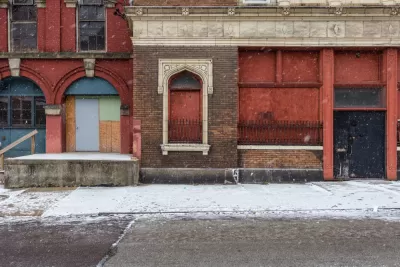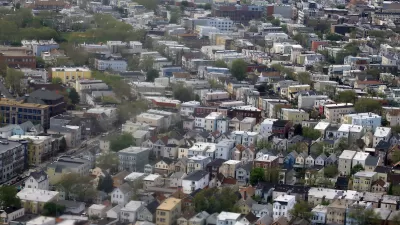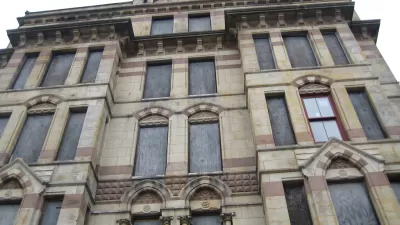The state is funding a $150 million effort to raze blighted buildings to accelerate revitalization.

Writing in The Center Square, J.D. Davidson reports that Ohio announced a new list of vacant buildings slated for demolition under a state program designed to eliminate blight and revitalize communities.
“The state added a large list of communities and buildings to the Ohio Building Demolition and Site Revitalization Program, announcing 2,277 additional blighted and vacant structures in 42 counties will be demolished,” Davidson explains. The effort is part of a plan to accelerate the process of transforming blighted properties into useful spaces.
“The projects are funded with grants from the $150 million set aside in the state’s two-year budget that passed in 2021. Thirteen counties will also receive an extra $35.3 million to cover expenses in excess of the initial aside grants.” Buildings on the list include two defunct hotels on property owned by the Port of Greater Cincinnati Development Authority, which the Authority plans to replace with an industrial spec building. Another 825 buildings were put on the list in October.
FULL STORY: More than 3,000 Ohio buildings to be demolished

Alabama: Trump Terminates Settlements for Black Communities Harmed By Raw Sewage
Trump deemed the landmark civil rights agreement “illegal DEI and environmental justice policy.”

Study: Maui’s Plan to Convert Vacation Rentals to Long-Term Housing Could Cause Nearly $1 Billion Economic Loss
The plan would reduce visitor accommodation by 25% resulting in 1,900 jobs lost.

Why Should We Subsidize Public Transportation?
Many public transit agencies face financial stress due to rising costs, declining fare revenue, and declining subsidies. Transit advocates must provide a strong business case for increasing public transit funding.

Paris Bike Boom Leads to Steep Drop in Air Pollution
The French city’s air quality has improved dramatically in the past 20 years, coinciding with a growth in cycling.

Why Housing Costs More to Build in California Than in Texas
Hard costs like labor and materials combined with ‘soft’ costs such as permitting make building in the San Francisco Bay Area almost three times as costly as in Texas cities.

San Diego County Sees a Rise in Urban Coyotes
San Diego County experiences a rise in urban coyotes, as sightings become prevalent throughout its urban neighbourhoods and surrounding areas.
Urban Design for Planners 1: Software Tools
This six-course series explores essential urban design concepts using open source software and equips planners with the tools they need to participate fully in the urban design process.
Planning for Universal Design
Learn the tools for implementing Universal Design in planning regulations.
Smith Gee Studio
Alamo Area Metropolitan Planning Organization
City of Santa Clarita
Institute for Housing and Urban Development Studies (IHS)
City of Grandview
Harvard GSD Executive Education
Toledo-Lucas County Plan Commissions
Salt Lake City
NYU Wagner Graduate School of Public Service





























